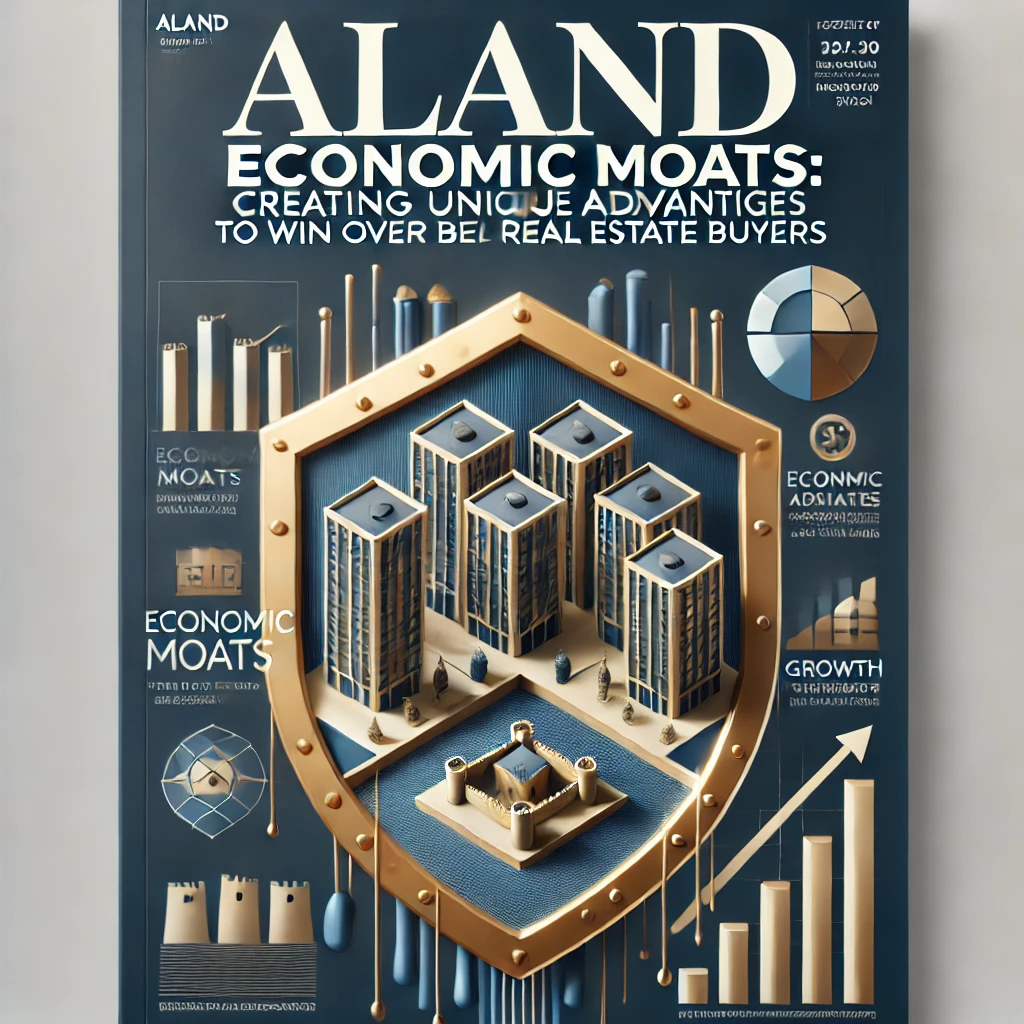Economic Moats: Creating Unique Advantages to Win Over Bulk Real Estate Buyers
- Published Date: 13th Mar, 2025
-
5★ ★ ★ ★ ★(165)

In the competitive world of real estate, securing the attention of bulk buyers requires more than just appealing to price points. A more strategic approach involves the creation of economic moats—distinct, sustainable advantages that set a company’s offerings apart from the competition. These advantages serve as barriers that make it difficult for competitors to replicate, providing long-term value to both buyers and investors.
Why Economic Moats Matter for Bulk Real Estate Buyers
Economic moats are crucial for large-scale real estate transactions because they provide a safeguard against market volatility and competition. Investors, especially institutional ones, look for assets that can offer consistent returns with minimal risk. By focusing on creating and leveraging these unique advantages, real estate developers and investment firms can cultivate trust, enhance buyer loyalty, and differentiate their portfolios from the crowded market.
Dr. Pooyan Ghamari, Founder of the ALand Platform, emphasizes the role of a solid economic moat in real estate transactions: “In real estate, bulk buyers aren’t just looking for properties; they’re looking for sustainable value. Building a moat means creating features that can’t be easily copied, whether it’s through exclusivity, technological integration, or environmental sustainability.” His insight highlights the importance of strategic differentiation that extends beyond location or initial pricing.
Strategies to Build Economic Moats in Real Estate
-
Technological Integration Real estate companies that leverage cutting-edge technology, such as AI-driven property valuations, smart building solutions, and blockchain for transaction transparency, can create a substantial moat. Blockchain, for example, is increasingly being used in tokenization of real estate to allow fractional ownership, making properties more accessible to a wider range of investors. This technological edge not only enhances the property’s appeal but also establishes the company as a leader in innovation.
- Practical Example: Implementing blockchain technology in real estate transactions increases transparency and reduces friction in property deals, attracting tech-savvy bulk buyers looking for security and efficiency in large investments.
-
Branding through Social Responsibility In today’s socially conscious market, cause-related marketing has proven to be a powerful strategy. Bulk real estate buyers are increasingly interested in developments that align with environmental sustainability, community involvement, or charitable causes. When a company takes steps to integrate these values into their brand identity, it builds goodwill and strengthens brand loyalty.
Dr. Ghamari explains, “Brands that can authentically align their business strategies with global sustainability efforts not only improve consumer perception but also create long-term competitive advantages. A well-crafted social responsibility campaign is an investment in both the market and the community.”
- Practical Example: A real estate developer that incorporates green building practices and participates in local charitable programs can significantly increase its brand equity, making it more appealing to corporate investors and bulk buyers who value sustainability.
-
Exclusivity and Scarcity Creating a sense of exclusivity can drive demand among bulk buyers. Whether it’s through offering properties in high-demand areas with limited availability or creating luxury developments with unique architectural features, scarcity makes an asset more desirable. Exclusivity can be framed around location, design, or access to premium services, but it needs to be clearly communicated and substantiated by the quality of the offering.
- Practical Example: A limited-edition development project in a prime location, with premium services and a reputation for architectural excellence, will appeal to bulk buyers who are seeking prestige alongside profitability.
-
Market Positioning and Strategic Alliances Building a competitive moat also involves establishing strong market positioning through strategic partnerships. Aligning with global brands, leveraging government incentives, or capitalizing on international alliances can provide access to unique resources, market channels, or preferential regulations that competitors may not have. These alliances can create a unique value proposition that makes the company’s offering stand out.
Dr. Ghamari notes, “Strategic collaborations with international investors, coupled with favorable regulatory policies, can serve as a foundation for bulk buyers to see a developer or investor as a reliable, long-term partner.”
- Practical Example: Partnering with an international brand for a development project in a burgeoning real estate market can provide bulk buyers access to exclusive projects, better financing options, and the credibility of a globally recognized brand.
-
Customer Loyalty through Personalized Solutions Bulk buyers often demand a level of customization or tailored solutions that meet their specific investment or lifestyle needs. Providing personalized services, such as bespoke property designs, investment packages, or concierge services, can build strong relationships and make it harder for competitors to win over those buyers.
- Practical Example: Offering bulk buyers access to a tailored property management package or personalized financing options that fit their unique needs will create a strong loyalty factor that competitors struggle to match.
Practical Takeaways for Real Estate Investors
- Leverage Technology: Ensure your properties are aligned with technological advancements like blockchain, smart homes, and AI-driven solutions to enhance appeal and transparency.
- Incorporate Sustainability: Embrace environmentally friendly building practices and engage in social responsibility campaigns that resonate with conscious investors.
- Create Exclusivity: Position your properties as rare, high-demand assets by leveraging location, design, and high-end services.
- Strategic Partnerships: Build global alliances and secure regulatory advantages to differentiate your offerings.
- Customization: Offer personalized solutions to attract bulk buyers who demand a tailored investment experience.
Explore further insights and strategies at ALand, discover EE Gold’s transformative potential, or stay updated with industry news at The ALand Times.

